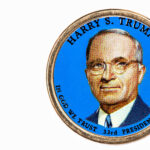The Rush-Bagot Treaty, signed in 1817, was an agreement between the United States and Great Britain that established the world’s first disarmament agreement. The treaty was signed in response to a number of naval conflicts between the two countries in the Great Lakes region during the War of 1812.
The Rush-Bagot Treaty limited the number of naval vessels that the United States and Great Britain could maintain on the Great Lakes. Specifically, the treaty limited the number of armed vessels that either country could maintain on the Great Lakes to one vessel of 100 tons or less, equipped with only one 18-pounder cannon.
The treaty was named after its negotiators, Richard Rush of the United States and Charles Bagot of Great Britain. The negotiations took place in Washington, D.C., and the treaty was signed on April 28, 1817. It was then ratified on April 16th, 1818 by the US Senate.
The Rush-Bagot Treaty was a significant diplomatic achievement for both the United States and Great Britain. The treaty helped to reduce tensions between the two countries in the Great Lakes region and paved the way for improved diplomatic relations between the two countries.
The treaty was also significant in that it established the principle of disarmament through international agreement. The idea that countries could limit their military capabilities through international treaties was a new concept at the time, and the Rush-Bagot Treaty set an important precedent.
The Rush-Bagot Treaty remained in effect for many years and was reaffirmed by subsequent treaties between the United States and Great Britain. The treaty was also an important precursor to other disarmament agreements, such as the Washington Naval Treaty of 1922 and the Strategic Arms Limitation Treaty (SALT) of 1972.
References:




